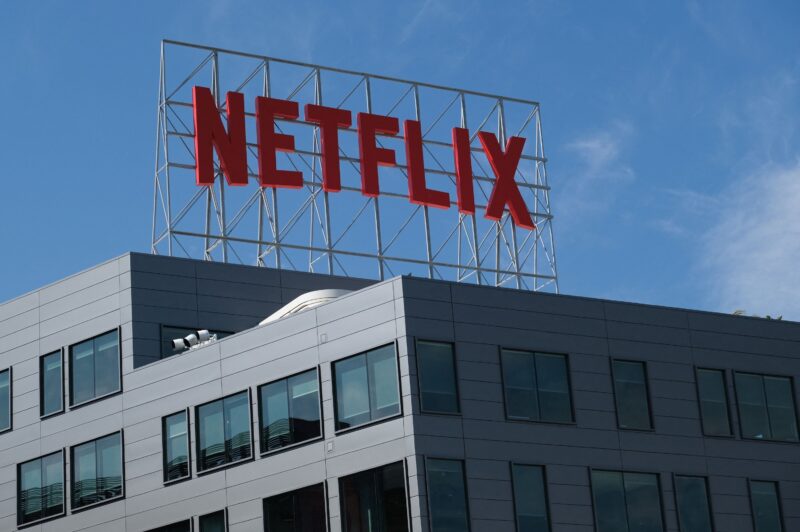Looks like the year 2022 didn’t quite prove to be the new year, new subscribers for the streaming giant Netflix. For a while, Netflix seemed to be the absolute king of the streaming hill. It was the first name that came to everyone’s mind whenever the word “streaming service” came up. But every rise hath a fall.
Netflix recently released its Q1 earnings report for 2022 that revealed a shocking loss of 200,000 subscribers, a worrying shift for a business that had previously only seen sustained and exponential growth since 2011. However, this wasn’t the only shocking news the report came bearing. Far worse in the report was the company’s estimation of a further 2 million subscribers loss by the second quarter of this year.
Following this news, the company’s stock price dropped by a significant 35%. The platform had added about 26 million customers annually over the last five years. However, it had witnessed an addition of just 18 million last year. Which is a significant decline, and one that undercuts the bull thesis about the company.
As a result, the company indicated cutbacks in content expenditure, canceling the Bright sequel and comic adaptation Bone, and also signaled potential cuts to employee numbers and discretionary spending.
On the contrary, HBO saw the addition of nearly 13 million subscribers last year across both traditional HBO as well as HBO Max, with a reported growth of three million in the last quarter. After the recent addition, both services reported a combined 76.8 million subscriber base worldwide. Although this number is still dwarfed by Netflix’s 221.64 million subscribers, recent stats reports that this isn’t going to be the case for long. While Disney Plus Disney Plus accounts for 129.8 million.
According to AT&T Q1 2022 report:
At the end of the quarter, there were 76.8 million global HBO Max and HBO subscribers. Global HBO Max and HBO subscribers increased 12.8 million YoY and were up 3.0 million sequentially, primarily driven by international as well as domestic retail subscriber gains reflecting the strength of the programming slate. At the end of the quarter, there were 48.6 million domestic HBO Max and HBO subscribers versus 44.2 million in the year-ago quarter, up 4.4 million YoY.
What went wrong with Netflix?
Several reasons have been under debate for the platform’s massive subscriber fall. While Netflix blamed password sharing as a big reason for the recent fall, analysts also cited inflation as one of the major reasons leading to the latest stats. With prices rising everywhere, households are cutting back on what they consider non-essential services. And of course, Netflix users themselves were vocal on social media, stating that the platform’s recent increase in subscription rates is a reason subscribers were abandoning the service.
Increasingly Competitive Market
Previously, Netflix was serving the market as the only streaming service that prompted slow migration of audiences away from traditional television and into the “watch what you want, when you want” model.
However, more recently Netflix has been facing increased competition by a streaming landscape populated now with a growing number of platforms, a fact that the company also acknowledged in its letter to shareholders. The launch of Disney+ in 2019, HBO Max in 2020, and Paramount+ in 2021 has provided the subscribers with a number of options to choose from.
Hence, owing to the growing number of players in the market and with every major studio launching a platform ultimately leads to a cut-down subscriber base for the previous giant, i.e., Netflix. Since, whenever a major studio launches its streaming service it removes its content from Netflix.
For example, the Netflix license for Friends, which once was one of the platform’s top binged series was not renewed by rights holder Warner Brothers Television in 2020. As a result, Friends will now be disappearing from Netflix markets around the globe and instead will be streaming on Warner Brothers’ Discovery platform, HBO Max.
Due to these reasons, it is becoming increasingly difficult for global streaming services like Netflix to compete against not just other newly emerging streaming houses, but also with local and regional services that have deep-rooted relationships with audiences.
Content Problem
If we talk about content, then every streaming platform needs to have two key ingredients in order to succeed.
First and foremost, it needs to have an attractive catalog of movies, series, and other forms of content that will keep people hooked even after they’ve caught up on the latest hit. Meaning that while people might sign up to Netflix for “Russian Doll,” or “The Tinder Swindler,” they’ll stick around to watch “Sleepless in Seattle” and maybe stream a season of “New Girl.”
So, more importantly, a streaming site needs compelling hits that not only attract attention but also keep them coming for more. As a result, this will convince people to subscribe, at least for a month or two, so they can catch up on the latest show that everyone is talking about.
Conflicting Values
To alter the negative subscriber trajectory, Netflix is proposing an ad-supported subscription tier, which directly conflicts with its brand values. Once implemented, this will entirely shift the platform’s attention from customer experience by forcing advertising on patrons.
Criminalizing Customers
Netflix recently announced a crackdown on password sharing between households. This might lead to a further decline in its annual subscriber count, as turning the customers into enemies never settles well for any branding campaign. It not only breaks the customer’s trust but also makes the devoted fans feel alienated.
Following this Netflix recently reported, that they will be issuing fines to certain accounts in Chili, Costa Rica, and Peru for sharing their login credentials.
Global Financial Challenges
Additionally, the platform seems to be acting poorly to the increasing pressure from current global financial challenges. It appears that the platforms newly proposed ‘solutions’ are driven primarily to secure their topline revenue above all.
Owing to a massive decrease in the platform’s daily subscriber count, the company’s revenue grew slowly, at a rate of 9.8 percent YoY as compared to 24 percent growth in the first quarter of 2021. This directly affected the market and in after-hours trading, Netflix’s shares dropped by 26%.
Rather than adding new features or content, the Netflix answer is removing key cornerstones of the service. However, for Netflix, its recent subscriber loss indicates a less promising future.
Key Takeaway For Startup Founders
While Netflix saw exponential growth since its expansion beyond the US in 2010, in the past few years the company has seen some downfalls due to a heavily competitive market. This prompts us to wonder whether the streaming giant’s business model, no matter how attractive it may have seemed wasn’t well prepared to hold its ground in the face of fierce competition.
Additionally, to still stay in the game the company seemed to have shifted its approach from a customer-centric model to a more commercialized model in an attempt to increase its revenue. This not only cost the company its loyal customer base but also didn’t help bridge the revenue gap.
Had Netflix continued to focus on enhancing its user experience and producing such content that increased customer engagement, it might have stood tall in front of the increasing market competition.








